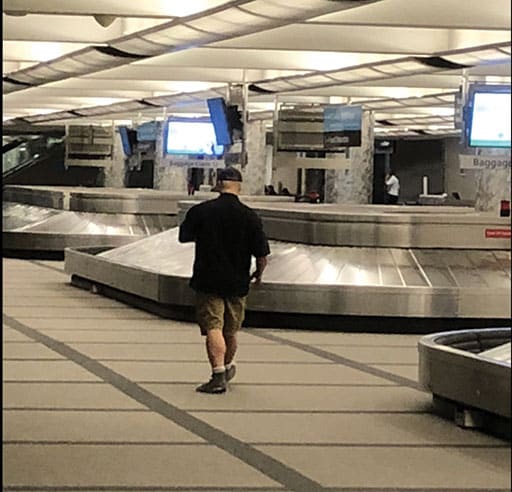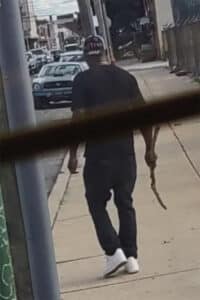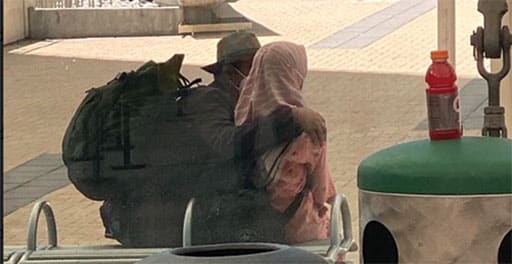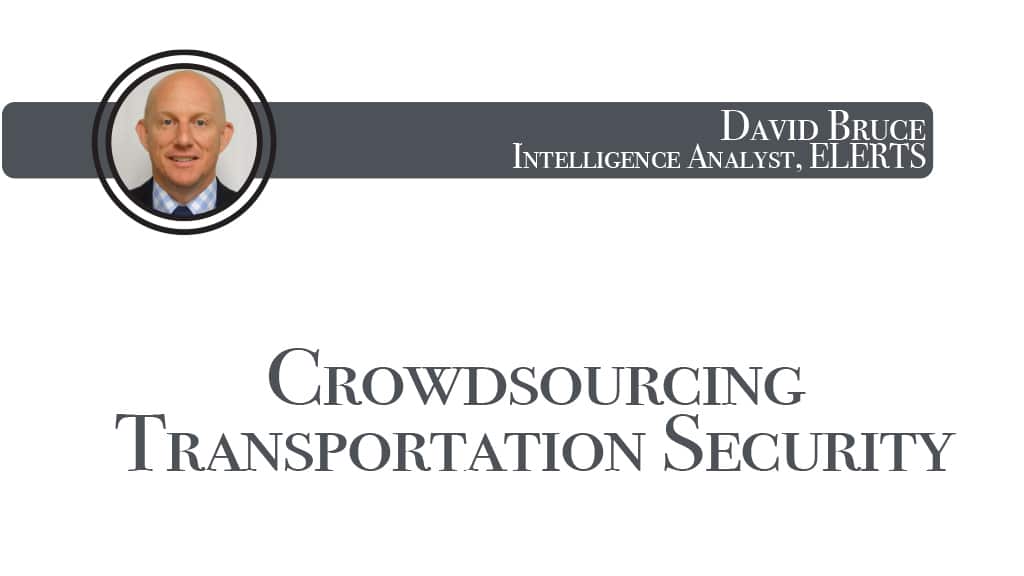Crowdsourced threat detection is revolutionizing incident reporting in the transportation and public safety space. By empowering travelers and employees to quickly and discreetly report issues, transportation officials move from reactive to proactive.
Across the United States a steady stream of reports of hostile passengers, insider threats, potential human trafficking, and equipment malfunctions funnel in to control centers from concerned travelers and employees.
Increasingly transportation venues are leveraging an often-overlooked layer of security and real-time information: the traveling public and employees. When travelers have the means to conveniently and discreetly report suspicious activity they become a force-multiplier for first responders in the transportation domain. Transportation officials move from reactive to proactive when travelers have a simple to use mobile-phone based reporting tool that delivers real time messaging, geolocation, photographs and video of suspicious behavior and other concerns.
On Feb. 16, 1968, Senator Rankin Fite completed the first 9-1-1 call in the United States. Today the antiquated “make a phone call” experience remains largely unchanged. Meanwhile, technology in mobile phones enable people to instantly transmit messages and a variety of media, without speaking to anyone. Companies in the public safety sector should meet their customers where they already are and where they are comfortable communicating. Today, phone calls rank as the least preferred method of communication for most.
A recent poll conducted by leadferno.com, revealed that 69.8% of respondents preferred text, email or communicating by messaging app over phone calls. And an astounding 23 billion messages are sent daily. Right, wrong or indifferent, by allowing customers to communicate by their preferred method, companies can capture critical information and get out in front of issues.
We’re in the business of incident prevention,” said Ed English, CEO of ELERTS. “We capture suspicious activity before incidents unfold. 9-1-1 calls are typically used for obvious and actively unfolding incidents, but what about situations that fall beneath that threshold? Daily we deliver hundreds of reports of suspicious activity, and a multitude of other behaviors that exist outside the baseline normative behaviors. Many people are hesitant to dial 9-1-1 in the pre-incident phases; we capture this information and then deliver it into the hands of dispatch centers that need this reporting. When entrusted with the safety of the public, it’s not an option to not know what’s going on.”
What you don’t know can hurt you. 9-1-1 calls are the current preferred method of reporting emergencies, but does not typically capture observations that fall beneath a certain threshold. We are taught at an early age that 9-1-1 calls are only for true emergencies. This has formed a hesitancy for people to dial 9-1-1. Beyond a general reluctance for many people to call 9-1-1 there exists another issue that is problematic, the technical limitations. A recent FCC study revealed that 10,000 people a year die while calling 9-1-1 because their location cannot be determined.

Behavior detection teams have long used a simple formula to detect threats and suspicious activity: Baseline + Anomaly = Decision. The same formula is used for the traveling public, they observe what is taking place around them and find what doesn’t fit. Baseline refers to the normal behaviors for a given venue. The key to situational awareness is to rapidly establish baselines.

Suspicious activity is anomalous to normal activity. In one report, a user observed something that alarmed them enough that they took the time to report on their suspicions. In airport baggage areas, passengers normally flow in from the secure side, carry-ons in hand, and make a beeline for the luggage carousel and collect their baggage. That is not what the user observed.
They saw an individual with no baggage, coming in from the exit, stopping at each carousel, and taking pictures of baggage or equipment. Passengers are concerned for their safety and the safety of their belongings. Call it a hunch, call it intuition — what gets reported, gets investigated.
However, each venue varies. Large luggage is commonplace at an airport, yet, at a subway station, during the rush hour commute into the city, a person with a large backpack would stand out from the crowd. Regardless of the venue, the principle remains the same and alert travelers will rapidly get a feel for what is normal in their environment.
Employees working day-after-day in an environment are perhaps best situated and have the strongest understanding of the baseline and reporting suspicious activity. When employees routinely use the See Say app to report maintenance issues and unexpected situations at a location, they develop a sort of muscle memory with reporting that also increases the reporting of suspicious activity that otherwise may go unreported.
While employees are an added layer of security and reporting, they are also a resource that must be protected. A recent ATU survey revealed that 75% of transportation workers “feared for their safety on a daily basis.” Workers are reporting being threatened, punched, kicked and spit on by irate passengers. Transportation workers and passengers deserve to work in an environment free of fear for their safety and passengers need a discreet method to report violent incidents before an attack takes place.
“Frontline transportation workers always need to watch for potential threats to their safety and others. Making drivers sit in plexiglass cages is not the answer and only a partial solution at best — determined attackers find ways around the plexiglass,” said English. “And drivers aren’t at a vantage point to see everything. Often threats come from behind them. They might not be in a position to see it, but passengers often do. Passengers use the See Say app on their phone to quickly report threatening behavior. This early warning of an imminent, potential attack on a driver enables the transit agency to send police to intervene. Drivers need protection and it’s great to see everyday passengers have the driver’s back.”
While the need to protect workers is a growing concern, so is the need to protect travelers reporting incidents. One way that ELERTS protects its users is by disabling the flash on mobile-phone cameras when people take photos during incidents. Another way is by allowing users to send information anonymously, if they choose.
For technology to be useful during stressful events, it must be built with simplicity for the user. During high stress events, fine motor skills are diminished, making once simple tasks difficult or impossible. With this in mind, ELERTS built its See Say app with just two big buttons: “Call Police” or “Report a Problem.” By limiting choices, users have less information to process. There is also an option to just send video or photos, without typing a word. Simplicity under stress is a key factor for performance under stress and increased reporting.

For one traveler with the See Say app, the simple-to-use system made the decision to instantly report a possible case of human trafficking an easy one.
“This woman looks scared to be with this man and their body language is awkward. They are outside security on the east side.”
With two sentences, a photograph and geolocation, investigators had the information necessary to intervene in a situation in a timely, well-informed manner.
But not all incidents need a physical response. One common issue is passengers smoking in a marked no-smoking area. When these reports come in, dispatch centers can sometimes remedy the situation with zero contact by using the Attention Engine. This technology automatically identifies the camera closest to the report location allowing dispatchers to view and mitigate minor issues by using announcement speakers in the area. Reconciling issues remotely allows for critical resources to be used in the areas where they are truly needed. It also has the potential to cut down on negative interactions between transit employees and customers.
In risk management, there are black swans and gray rhinos. Black swan events are obvious — it’s what everyone fears: terrorism, fire, mass casualties. People feel comfortable placing 911 calls for these events. But for every black swan, there are countless gray rhinos. Gray rhinos are in nature, highly probable, high impact — yet neglected threat. Gray rhinos can be just as catastrophic: malfunctioning escalators, emergency exits filled with cleaning gear that are impassable, and flooded bathrooms causing a slip and fall risk. Without a crowd-sourced reporting platform these hazards can go unreported.
When concerned passengers are empowered to report incidents by using the method of their choosing, there is a dramatic increase in reporting. When their information is delivered to a control center in a way that leverages technology already present in their existing infrastructure it creates an environment where overlapping systems provide proactive situational awareness to mitigate hazards.
